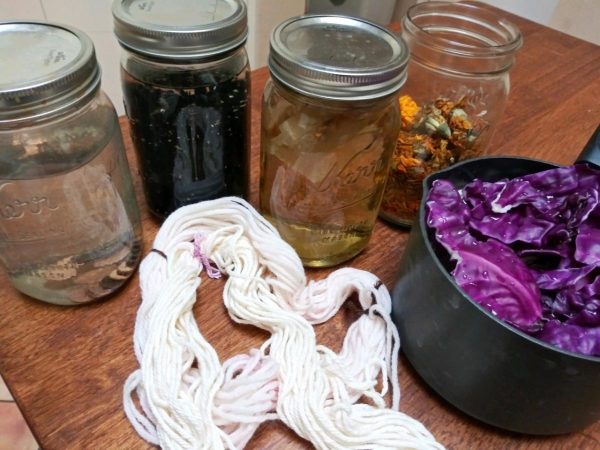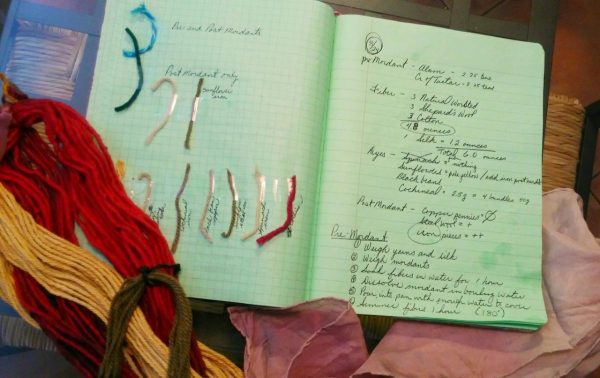Our yarns have been prepared with a mordant bath. Next, you should “bundle” your yarn. About 30 wraps around a chair or your arm, and tie the bundle with a string at two ends to keep the yarn from becoming a tangled mess in the dye bath. I keep a recipe/journal book and record all the data every time I dye. Every experiment is written in my book so I know what to avoid next time, and which were a delightful success. I note the kinds of yarn I’m dyeing (wool, cotton, silk..), whether I’ve pre or will post mordant them, and what color tie I’ve used to indicate each different type of yarn and mordant (all the wools are bundled with a red tie..).
The supplies you’ll need to prepare the dye baths are easily found any kitchen.
– non-aluminum pot, one for each dye
– distilled water
– Recipe / journal book
– Ball jars
– thermometer
Step 1 – Gather your plant material.
Today I am making small batches of dye. Using Marigolds, Black Beans, and Red Cabbage (a new
one for me). I stuff a large loose tea bag with the Marigolds and put them in a Ball jar and fill the jar
with distilled water. I filled the next jar half way with Black Beans and fill with distilled water. Leave these set
overnite.
Step 2 – The Red Cabbage.
Layer cabbage leaves in between the yarn in the pot you will dye in. Use at least a half of the cabbage. Add
enough distilled water to cover all the material. Leave to soak overnite.
Sstep 3 – Copper post- mordant.
Put a hand full of pennies in a jar with 2 tablespoons of white vinegar and 1 tablespoon of salt. I’m hoping this
will change the color of the black bean dye AFTER I’ve dyed the yarn. Let it sit.
That’s it for now. Everything set to soak overnite. Tomorrow the real magic begins. 

